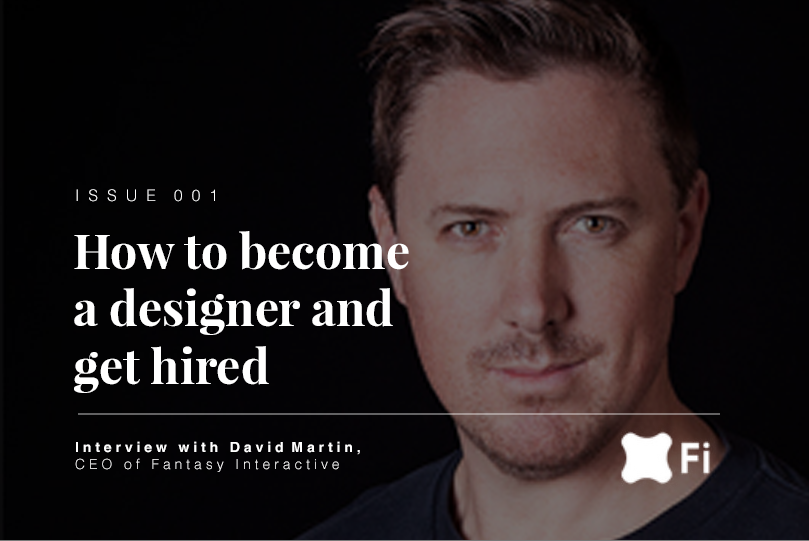[row]
How to become a designer and get hired. Issue 1: Interview with Fantasy Interactive CEO David Martin
I sat down with David Martin, the CEO and Founder of Fantasy Interactive, an independently owned human-centered design agency with a mission to impact the user experience in every-day products through bold design. They have an impressive client roster including Facebook, Spotify, HP, USAToday.com, Wacom and Google to mention a few. With over 200+ industry awards, David has managed to build a globally recognized brand. So when I thought of creating a design series that would help designers improve their craft and get hired, there was no better place to start than Fantasy Interactive.
What you will learn
- How David started and got into design
- Influences and inspiration
- Advice for those with no design experience
- How to craft your portfolio
- Standing out and getting hired
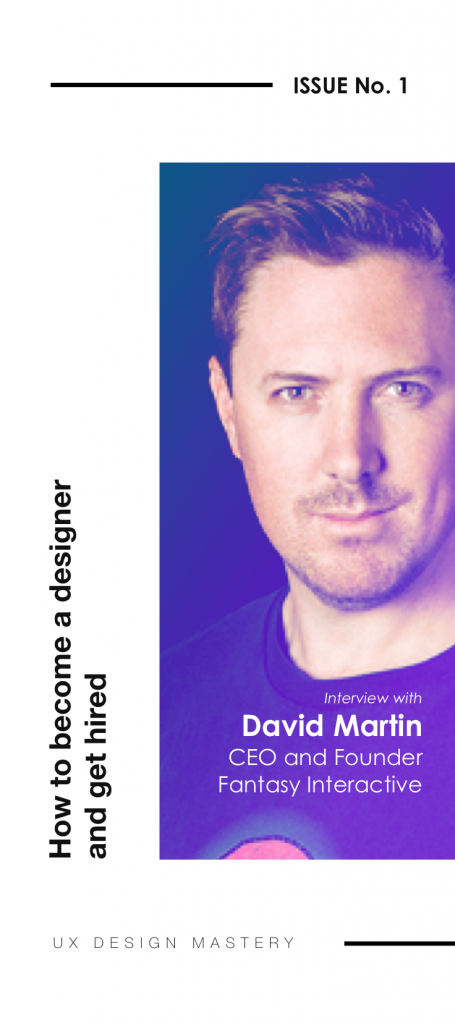
[/row]
Youtube full interview.
Thank you so much David for joining us. David if you could take us back to when you were still a student and tell us a little bit about where you grew up. What did you study?
I started a long way from here. I started in Dublin, Ireland. When I went to school I could say I was not a good student. I communicated very visually and I was not so good at the academic side of things. I did not believe in certain subjects like history and even math which I knew I would not use so I kinda tuned out and daydreamed which ultimately put me in a position where I could not get into universities that I wanted to. I had to repeat exams and eventually ended up getting into college. I ended up getting into a communications course in Germany. I went to Sweden to look for jobs. Any type of jobs, on cruise ships, cleaning toilets, whatever it would take to get over to the States.

While this was going on I started exploring the Internet and found it very unattractive, very ones and zeros and as I was doing that I just found a passion for organizing it by redesigning it. My expectation of the Internet was that of the movie ‘Minority Report’ but then it wasn’t, so I started designing in my free time and that’s how I started.
What tools were you using?
I started off using something like a Squarespace, a website builder. Because I’d never designed in my life I picked it up listening to music and I found that I had a talent for designing things with the computer like reorganizing things on a page even though I cannot draw to save my life. But using a computer I can somehow design little details of effort into anything. No matter what profession you are in this does pay dividends down the road.
Were there any influences or inspirations along the way like friends or mentors?
No, nothing like that but inspiration came from living in Ireland and growing up on Knight Rider. I love things that are well organized, things that were well taken care of. I just had an affection for it. I was always blown away by game UI, playing games like Nintendo but I always felt they could have been more finessed, refined and that I could bring a little bit of color into things.

How then did you enter the industry?
So basically, I started designing in Flash 3, the very early days and I started to see that this platform had motion capabilities and I wanted to bring UI to life. That was a huge driver for me to combine those things. So I started making Flash sites and they started getting noticed because no one was really working with Flash except maybe banners. So I started building websites and brought some user interaction to them. It was just mind blowing. Very similar to how on Dribbble, people use the GIF to take designs to the next level. It’s always looking at how you can take something to the next level. The first job that we got was around US$20k with a game studio and from there we started hiring people.
We basically sacrificed everything to create a portfolio because I knew the portfolio would create credibility and start attracting clients. In our second year, there was a phone call from Time Warner and they came in to hire us to redo their portal.

For me, you have to be able to take those opportunities and make the most of them. Time Warner came in, then Xbox came in a week after so it was all happening at the same time.There was never any room for snowflake mentality in our business. We are not going to push people too hard or bend over backwards for our clients because our business is built on people. When there are lows, our team comes together and figures out how to make it work. It’s knowing your principles, your DNA and when it’s time, to drive hard. When you surround yourself with good people is easier to deal with those situations.
How did you grow the business – through marketing or referral?
Fantasy has never had a sales team since day one so all our work is a hundred percent referral. From 2001/2002 it has not changed. It’s basically making work that is respected by other designers and those designers will spread the word. The key is to constantly push. A lot of people over the years will do something good and then two years will go by and their work is still at the same level as a few years ago and the key for any designer is to constantly push the bar. Your attitude should always be about pushing yourself to the next level every 6 months to a year.
Even today, when you compare your work with the top 20 Dribbble shots over the past month and put your work beside them, honestly ask yourself “Does your work fit in there?”. If it doesn’t, look at the details of the other 20 shots and figure out what about those details makes them better. Start implementing that same finesse in your work and put more time into it.
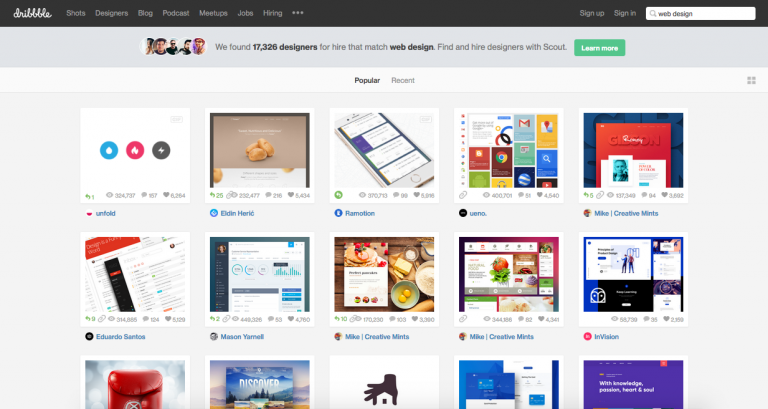
As a designer, you have to find the time, the ethic, the consistency, the love, the passion to focus on the details because details are something that this world lacks immensely and we are crying out for it.
What advice would you have for someone with no experience?
Do what I did. Cheat. Copy. No one ever taught me how to design. I just liked it and I just started designing. Even though my first pieces were absolute crap and terrible, when I looked at Awwwards I just wanted to copy the work. So what I did was I took their work and I put it in Photoshop and I tried to copy pixel for pixel the work that I saw and when I was able to do that, it made me feel like I was able to reproduce the amazing work that I saw. As I was doing that I would try to make it even better by a bit. Test yourself then stand back to see how you learnt to be as good as that person.

So if you are starting off today as a designer, go to Dribbble look at the Top 100 shots, try to replicate your favourite ones and if you can replicate them you are in business. As you improve the work, try to do just a little bit better. Do something slightly different, change the color or change the font.
See if you can make it better than the original and that will sharpen your skills in a way no university can teach you.
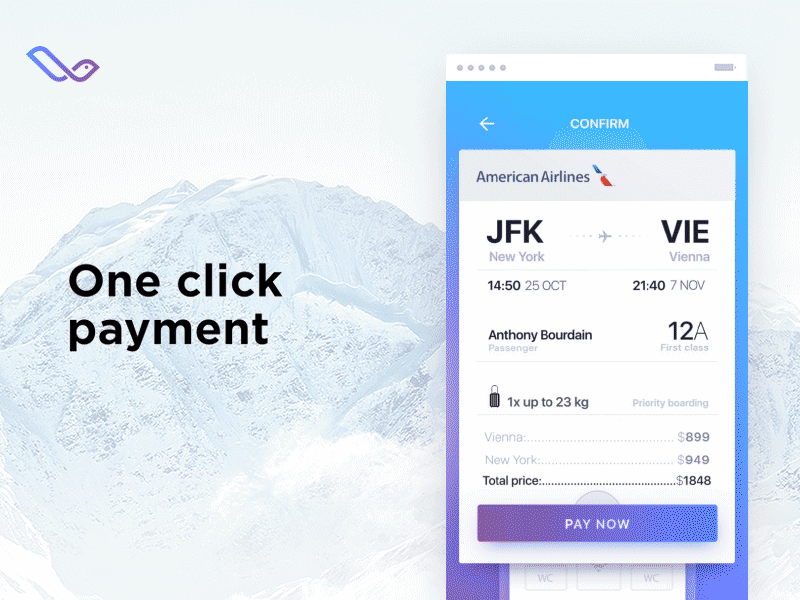
How about soft skills and technical skills?
As far as skills go, you can go on YouTube and watch videos all day long. That’s what you have to do by yourself at home. Use the Internet. If you happen to work at an agency, there is opportunity to better yourself by working with other designers and you learn pretty quickly that way. In general, I am the least technical person especially when it comes to design. I have an eye for detail. I think the soft skills are more important. How you are able to critique yourself. How you are able to take criticism from others and not flake out about it. It’s how you position and brand yourself.
If you have 3 good projects in your portfolio and the rest are crap, leave out the rest. If you include everything, we look at that designer and we say they made a poor decision in representing themselves.
I don’t care about your last 10 projects I care about your best project. If you can do a project to that level then I know you can do everything else with us. But don’t turn me off by showing me the other stuff that you probably didn’t have enough time to do or enough inspiration to do. Quality over quantity.
Does your portfolio have to line up with what you want to eventually do in a job?
No, not at all. As long as I can see that you can compose with the right colors, fonts and the design is nice and tight. I advise people to take sites like Google or Apple iOS and say here is what there is currently and here is the improved version that I made. That is the stuff that is gonna get you jobs. The best work that you can do is work that you make without a client telling you to do it. That is what we do. We have this case study called ‘what if’. What if “Tinder and travel”, “What if airline”. We put that out because we had a week to spare and put something together that is without limits. So I would say to you designers, if you want to go out there and redesign CNN, make a better version of that without it being fluffy; use big imagery, visual aesthetics but think of the User Experience. Your design cannot just be beautiful, it has to be smart.
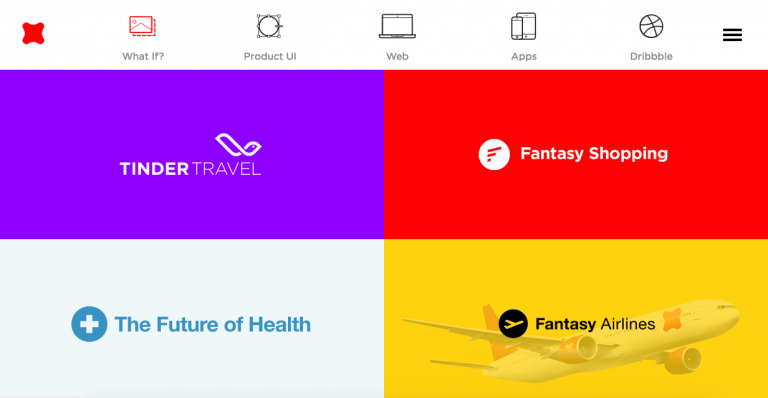
Smart Design is beautiful design combined with design that a user can actually use. Also focus on the mobile space, operating systems, Artificial Intelligence and try to come up with a cool shot to put up on your Dribbble or Behance.
And don’t spend all day on your portfolio. Nobody cares at the end of the day. When people review your portfolio, the last thing that people want to do is to figure out how to use your site.
They want to use Dribbble or Behance which they already know how to use quickly. All they’re looking for is one or two shots of gorgeous work. That’s all that we’re looking for. When I look at a portfolio I have about 15 seconds and sometimes 5 seconds to quickly scan, close the tab or keep it open. We just don’t have the time to go through something intricately put together.
Where do you see most portfolios hosted?
Behance and Dribbble have one consistent template for presenting your work. That’s all we need to see. Behance and Dribbble give you the opportunity to tell your story through screenshots and more of a flow of how you came up with something. Absolutely go and do that if you can. We just really want to see your work.
Any stories of great portfolios or instant hires?
There are three levels to getting hired. Level one is clearly a person that is not at the level that we need so we skip. Level 2 is someone who has some good work with great typography which is always a good sign. Level 3 is that person who is very, very rare. They have 20 – 30 shots but they are all immaculately done. The details are just there and they’ve added some UI motion.
I do not need you to be at level 3. We can get you to 3. We need you to be a 2. We look for the that level of finesse. If your Dribbble shots look like they could be on our Dribbble page, then you are hired.
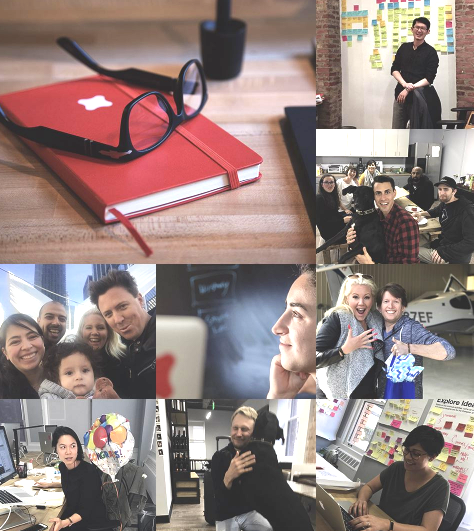
Design inspirations
Last piece of advice
[row]
Passion. Attention to detail. The small details make a massive difference.
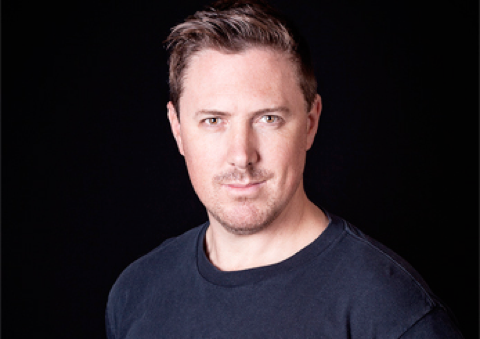
[/row]
Links and resources
Dribbble
Behance
Fantasy Interactive Website: fantasy.co
LinkedIn profile
Fantasy Dribbble page
Fantasy twitter page
Fantasy Career page
Discover more from UX Design Mastery
Subscribe to get the latest posts sent to your email.

